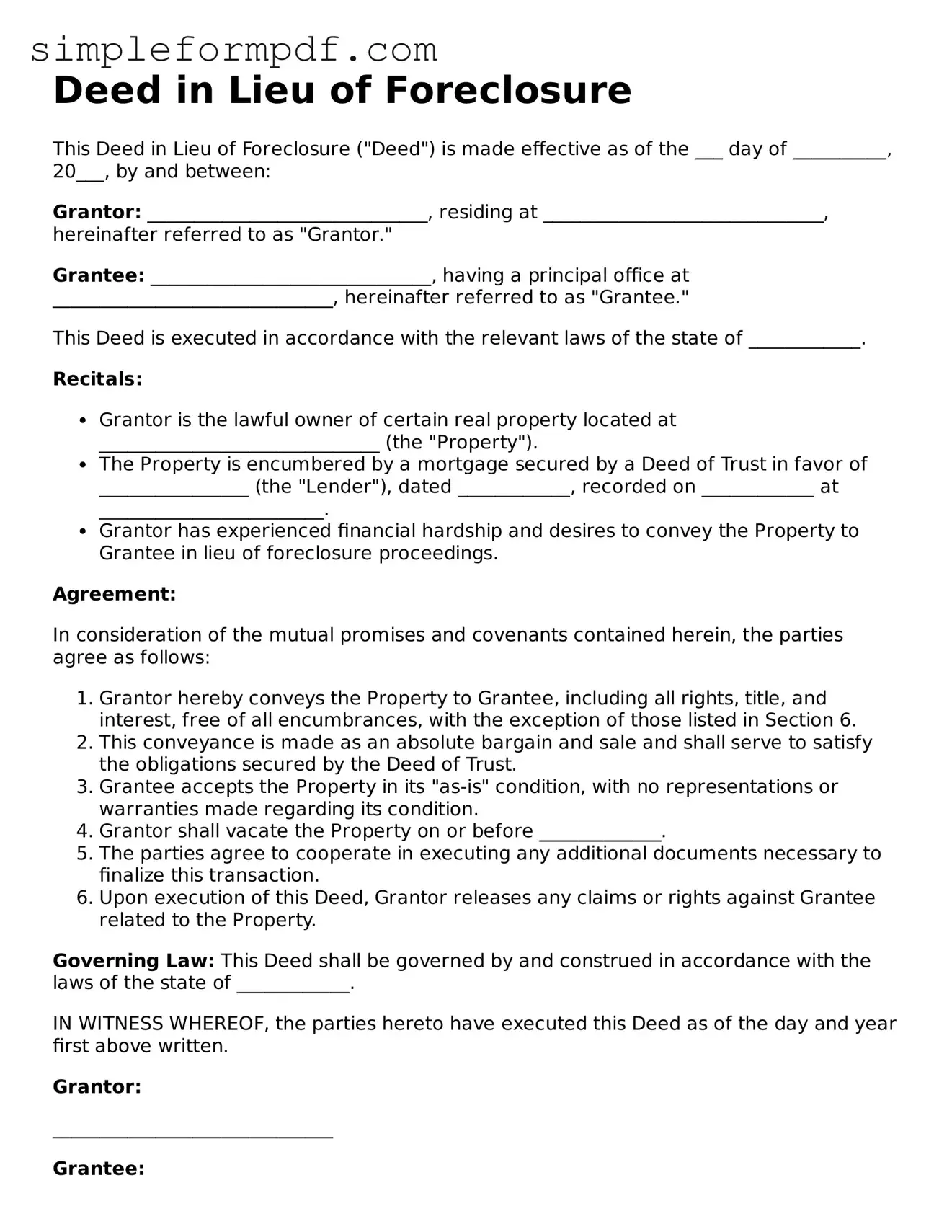Deed in Lieu of Foreclosure
This Deed in Lieu of Foreclosure ("Deed") is made effective as of the ___ day of __________, 20___, by and between:
Grantor: ______________________________, residing at ______________________________, hereinafter referred to as "Grantor."
Grantee: ______________________________, having a principal office at ______________________________, hereinafter referred to as "Grantee."
This Deed is executed in accordance with the relevant laws of the state of ____________.
Recitals:
- Grantor is the lawful owner of certain real property located at ______________________________ (the "Property").
- The Property is encumbered by a mortgage secured by a Deed of Trust in favor of ________________ (the "Lender"), dated ____________, recorded on ____________ at ________________________.
- Grantor has experienced financial hardship and desires to convey the Property to Grantee in lieu of foreclosure proceedings.
Agreement:
In consideration of the mutual promises and covenants contained herein, the parties agree as follows:
- Grantor hereby conveys the Property to Grantee, including all rights, title, and interest, free of all encumbrances, with the exception of those listed in Section 6.
- This conveyance is made as an absolute bargain and sale and shall serve to satisfy the obligations secured by the Deed of Trust.
- Grantee accepts the Property in its "as-is" condition, with no representations or warranties made regarding its condition.
- Grantor shall vacate the Property on or before _____________.
- The parties agree to cooperate in executing any additional documents necessary to finalize this transaction.
- Upon execution of this Deed, Grantor releases any claims or rights against Grantee related to the Property.
Governing Law: This Deed shall be governed by and construed in accordance with the laws of the state of ____________.
IN WITNESS WHEREOF, the parties hereto have executed this Deed as of the day and year first above written.
Grantor:
______________________________
Grantee:
______________________________
